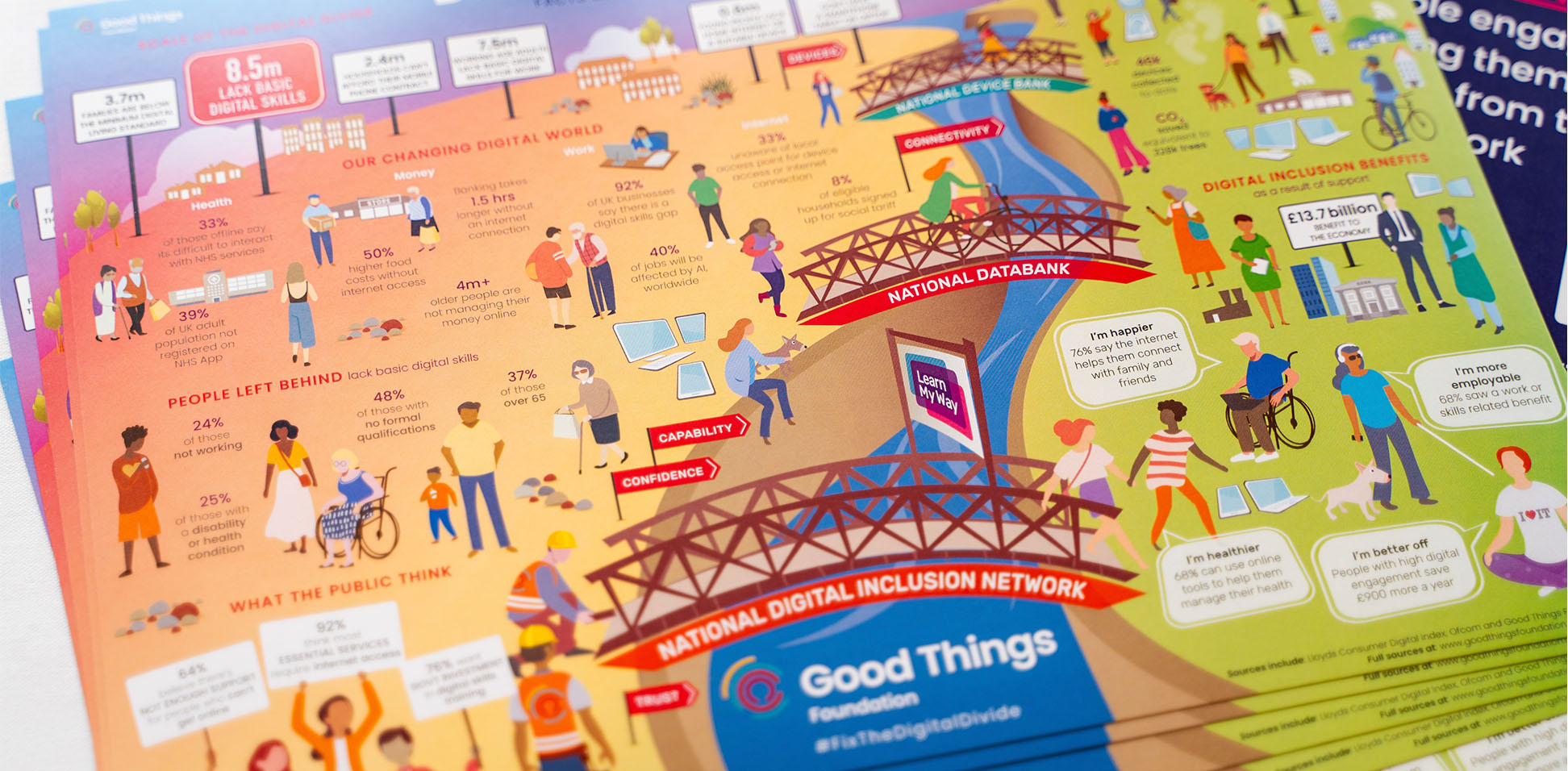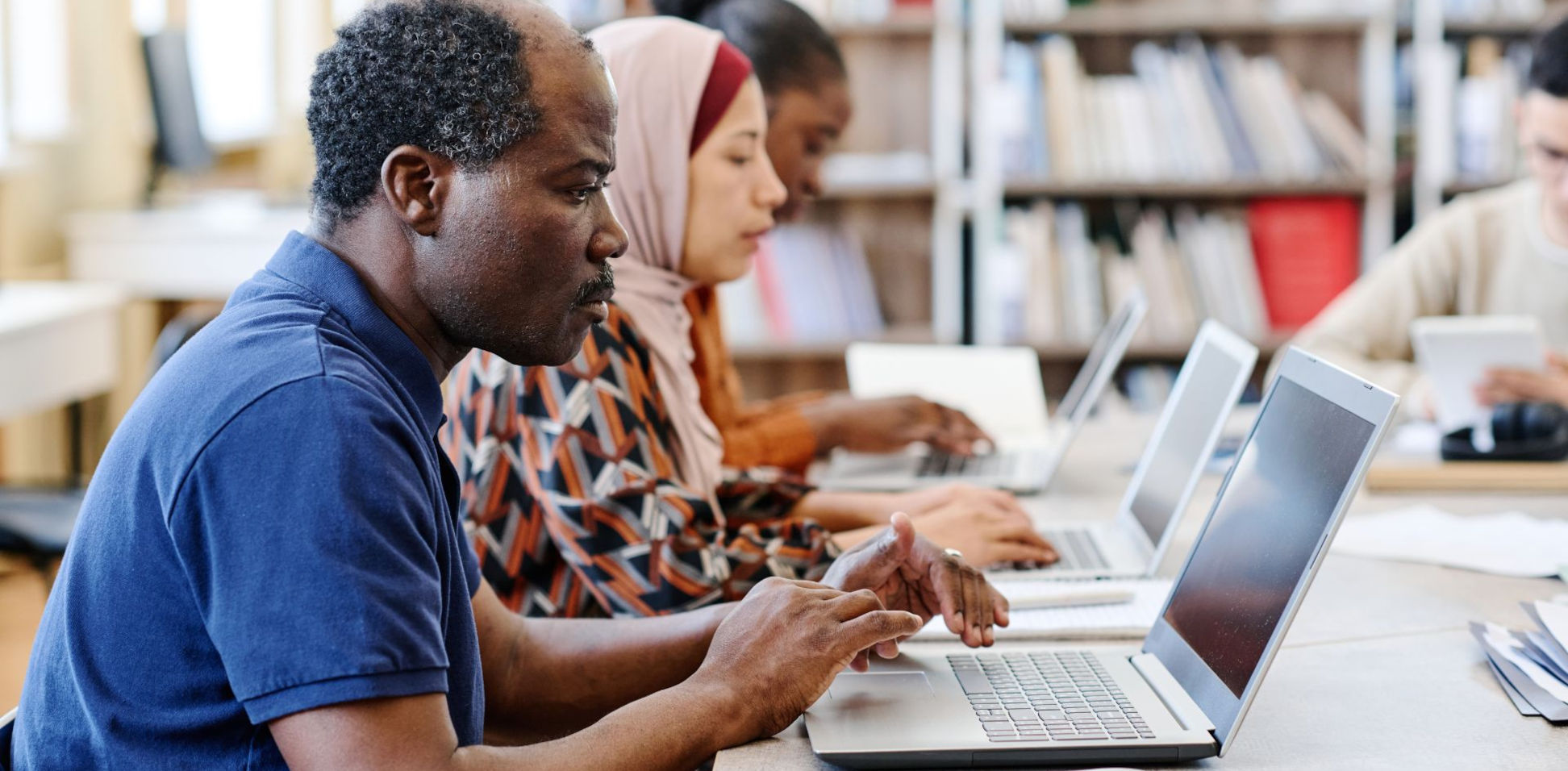Exploring the links between digital inclusion and physical activity
We worked in partnership with Sport England to carry out research to understand the links between digital inclusion and physical activity.
In March 2025, we worked in partnership with Sport England to carry out research to understand the links between digital inclusion and physical activity. This project reflects concerns about possible overlaps between the groups of people who face barriers to digital access, skills and confidence, and the groups who face barriers to being physically active. It also aimed to explore what role digital inclusion could play in helping people engage in sport, exercise and physical activity.
Through desk research, we synthesised evidence to identify intersections between digital inclusion and participation in physical activity. Through this, we identified opportunities for Sport England to support digital inclusion across the sector, as part of efforts to increase engagement in sport and exercise, particularly amongst those who face the most barriers to getting active.
Below we present a summary of the key findings from the project. You can access the full research report from the Sport England website.
Key findings
- Similarities in exclusion: Groups digitally excluded are often the same as those with low physical activity levels and worse health inequalities (e.g. older adults, disabled people, those in poverty, people with long-term health conditions).
- Digital exclusion as a barrier: Digital exclusion acts as a barrier for some people to access and engage with physical activity, and should be a key consideration when designing physical activity services. However, there are likely other, more influential factors shaping people's activity levels, beyond digital.
- Digital inclusion as an enabler: Digital access and skills can facilitate participation in physical activity, and can be effective for removing barriers to participation for some groups.
- Digital access, skills, and accessibility shape people’s journeys to being physically active: Growing reliance on digital platforms for accessing leisure and sport services means it is increasingly difficult for those facing digital exclusion to engage with these services.
- Effectiveness of digital tools: Apps, wearables, and online platforms can promote physical activity, but some groups may benefit more, potentially worsening inequalities.
- Lessons from other sectors: Health and library services offer models for promoting digital inclusion, such as place-based interventions in trusted community spaces, co-designing services with users, and improving data collection for better visibility of the issue.
Opportunities for action
Through the research we identified opportunities to support the sport, leisure and physical activity sector to contribute to more accessible, inclusive opportunities, through improved digital inclusion. These include:
- Building knowledge and understanding of who is impacted by digital exclusion and inactivity. For example by improving collection of population data on digital exclusion and physical activity; collecting data on digital skills of the sector’s workforce; gathering insights into current digital inclusion activities across the sector.
- Raising the sector’s awareness and understanding of digital exclusion and inclusion. For example by supporting sport and leisure organisations to participate in Get Online Week; facilitating the sharing of best practice around digital inclusion and physical activity; developing a framework for action on digital inclusion for the sector.
- Exploring the role that place-based approaches can play in reducing inequalities around physical activity, including those relating to digital access and skills. For example, exploring current models and piloting new approaches through Sport England’s existing ‘Place Partnerships’.


